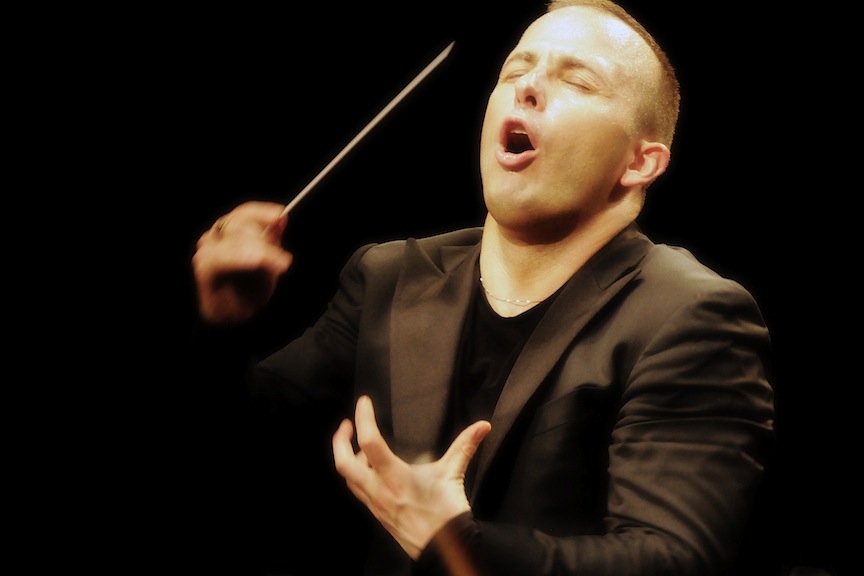
There are many people who are not convinced of the value of Anton Bruckner’s symphonies. Conductor Yannick Nézet-Séguin begs to differ, arguing eloquently from his Montreal podium that there is a lot of meaning and substance behind this Austrian’s music.
- Classical Music 101: What Does A Conductor Do? - June 17, 2019
- Classical Music 101 | What Does Period Instrument Mean? - May 6, 2019
- CLASSICAL MUSIC 101 | What Does It Mean To Be In Tune? - April 23, 2019
 With yesterday’s release of Symphony No. 6, Nézet-Séguin and his Orchestre Métropolitain are now past the halfway point in this epic survey, having already recorded Nos 4, 7, 8 and 9.
With yesterday’s release of Symphony No. 6, Nézet-Séguin and his Orchestre Métropolitain are now past the halfway point in this epic survey, having already recorded Nos 4, 7, 8 and 9.
From the point of view of the orchestral sound and the overall pacing, this is a remarkable effort. This is dense music, but Nézet-Séguin lays it out as clearly as a piece of chamber music. There are huge dynamic swells and ebbs that sound natural and unforced. Best of all, there is no sense of the conductor rushing us through the music that permeated the orchestra’s recording of Symphony No. 4.
It’s been a dozen years now since Nézet-Séguin took over Montreal’s other big orchestra, and, judging from this album, they are far more interesting to listen to together than is the Montreal Symphony Orchestra in its current state.
Ironically, the recording sessions happened before Christmas at La Maison symphonique, the home of that other orchestra.
It is in Nézet-Séguin’s seemingly natural pacing (because there is nothing truly natural about figuring out how fast or slow this music should be) — through four movements, each filled with character shifts and strange juxtapositions — comes the revelation that this could, in fact, be a great composition.
I’ve heard more than one composer complain that the reason so much new music doesn’t get accepted is that it isn’t played well. Let’s assume that to be true, for a moment, and ask how this might affect Bruckner’s symphonies?
I need to say up front that I adore Bruckner’s sacred music, but am not yet a believer in his symphonic work. But after some careful listening, I think the music works if one understands it as a metaphor for a person’s struggle to make sense of real life, where there are no guaranteed happy endings, where smiles and chuckles come from the unlikeliest of places, and where little things sometimes have as much impact as the proverbial piano falling onto a sidewalk.
Bruckner (1824-1896) spent two years working on this symphony, completing it in September, 1881. It is the only one that he did not obsessively revise. That could be because he never heard the full piece performed. It could be that it contains a particularly solid and true statement of what he thought.
If life is an ongoing, utterly unpredictable dance between happiness and grief, this is its musical expression.
But how to appreciate it?
Like sitting through one of Richard Wagner’s later operas, one has to allow oneself to drift into a trance, a sort of waking dream where the music takes us by the hand into strange and wonderful places — with Nézet-Séguin as our very able guide every step along the way.
For all the details on this album, click here.
+++
With late-Romantic music, I often find that a composer’s chamber efforts are a great way of unlocking the doors to understanding the music.
Bruckner, who didn’t write chamber music as a rule, completed a String Quintet that had its premiere the same year as Symphony No. 6, and I think it’s a great window on the soul of the larger piece. It, too, has four movements, but the Scherzo and Adagio middle movements are in reverse order.
Here it is, played by the Fine Arts Quartet with the addition of Gil Sharon as second viola:
John Terauds
- Classical Music 101: What Does A Conductor Do? - June 17, 2019
- Classical Music 101 | What Does Period Instrument Mean? - May 6, 2019
- CLASSICAL MUSIC 101 | What Does It Mean To Be In Tune? - April 23, 2019



